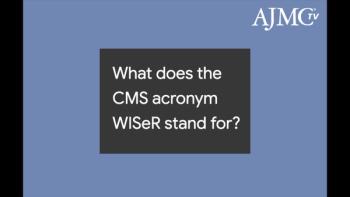
ASOPRS Orbit Session Details New Data on Malpositioned Implants, Orbital Compartment Syndrome
At the American Society of Ophthalmic Plastic & Reconstructive Surgery's 2021 Fall Scientific Symposium, presentations on orbital complications included research on poorly positioned implants and factors associated with orbital compartment syndrome.
In the first orbit session presented at the American Society of Ophthalmic Plastic & Reconstructive Surgery's 2021
In her presentation, Stella Chung, MD, of the Department of Ophthalmology and Visual Science at the Rutgers New Jersey Medical School, explained how improperly placed implants can lead to functional, cosmetic, and psychological complications.1
To investigate the characteristics of malpositioned implants and raise awareness of the prevalence of these complications, “we performed a 15-year retrospective chart review of all patients who had undergone orbital fracture repair and had postoperative CT scans,” Chung explained.
All participants were referred to a single center between 2005 and 2021, and implants were considered malpositioned if they “did not cover the bony ledges of the fracture, impinged on orbital structures, or extended beyond the confines of the orbit.”
Seventy-seven patients were included in the analysis, and orbital floor fracture was the most reported orbital fracture type (52 of 77; 68%). This was followed by combined orbital floor and medial wall fractures.
Analyses revealed:
- 53 of 77 (69%) patients had implants with inadequate coverage of the posterior ledge, followed by 16 (21%) with inadequate coverage of the posterior ledge and another wall, and 3 (4%) with implant placement in the middle of the orbit impinging on the globe or extraocular muscles
- Of those whose primary surgeon was known, 26 of 45 (58%) were plastic and reconstructive surgeons and 17 (38%) were oral and maxillofacial surgeons
- Significant postoperative complications, such as diplopia and enophthalmos, required removal of the malpositioned implant with secondary reconstruction in 42 (55%) patients
In addition, “about 11 patients were completely asymptomatic and the malposition implant was frequently discovered incidentally,” Chung said. She then walked through individual cases of patients included in the study, noting where malposition occurred.
Overall, researchers found incorrect positioning of an orbital fracture implant was extraordinarily common and largely unrecognized as a complication by most nonophthalmologists performing orbital fracture repairs.
“Many patients required reoperation to address postoperative complications while some patients deferred additional surgery despite symptoms,” Chung noted. “Instituting routine CT imaging after fracture repair would not only confirm implant location, but it would also serve as a useful adjunct for surgeons to continually assess and improve their surgical proficiency,” she concluded.
In a separate presentation, Andrew Lin, MD, of the Department of Ophthalmology at the New York University School of Medicine, discussed research on factors contributing to visual outcomes in OCS, which can cause permanent vision loss.2 In particular, Lin and colleagues sought to determine if time from OCS onset to intervention impacted visual outcomes in these patients.
To begin his presentation, Lin outlined the case of an 89-year-old woman with orbital trauma due to a fall. Six hours after the injury, the woman was transferred to the University of Iowa. “She had a left orbital floor blowout fracture with proptosis and globe tenting,” he explained. After receiving an OCS being diagnosis, the patient underwent lateral canthotomy and cantholysis (LCC).
This case, among others, served as the impetus behind the 20-year retrospective chart review, carried out at the University of Iowa. Twenty-nine patients who underwent emergency LCC or lid splitting between 1989 and 2018 were included in the review. Any patient with a ruptured globe was excluded from final analyses, and the mean patient age was 61.
Because covariate analyses of all patient factors assessed demonstrated a significant association of age and sex with LogMar change without significant correlation with LCC, the researchers included these 2 variables as covariates in regression analyses carried out to assess the association between LCC and LogMar change.
Specifically, the researchers found younger age and female sex demonstrated a significant correlation with improved final vision whereby time by itself did not, Lin explained.
“Everyone presented with elevated pressures, with a postoperative mean [intraocular pressure] of 26, and there was a 1.0 reduction in LogMar, which corresponds to around 7 lines of vision improvement,” Lin said.
Although no significant correlation was found between time to surgical intervention and visual improvement, “given that LCC or lid splitting is the only modifiable factor we have, urgency is recommended regardless of elapsed time from OCS onset” he stressed.
The study’s retrospective nature, potentially incomplete and inaccurate chart documentation, and the use of injury onset as a surrogate for OCS mark limitations to the analysis. In addition, most patients traveled to the center from rural locations “which extended their time to treatment, which may have also impacted the significance of time in visual recovery.”
References
1. Chung S, Sadek H, Langer P. Characteristics of malpositioned orbital implants following orbital fracture repair. Presented at: ASOPRS Fall Scientific Symposium; November 11-12, 2021; New Orleans, LA. Accessed November 11, 2021. https://asoprsfall.virtualbyvario.com/wp-content/uploads/2021/10/ASOPRS_2021_fall_syllabus_FINAL.pdf
2. Lin AC, Fox AR, Zimmerman MB, Shriver EM. Factors contributing to visual outcome in orbital compartment syndrome. Presented at: ASOPRS Fall Scientific Symposium; November 11-12, 2021; New Orleans, LA. Accessed November 11, 2021. https://asoprsfall.virtualbyvario.com/wp-content/uploads/2021/10/ASOPRS_2021_fall_syllabus_FINAL.pdf
Newsletter
Stay ahead of policy, cost, and value—subscribe to AJMC for expert insights at the intersection of clinical care and health economics.















































